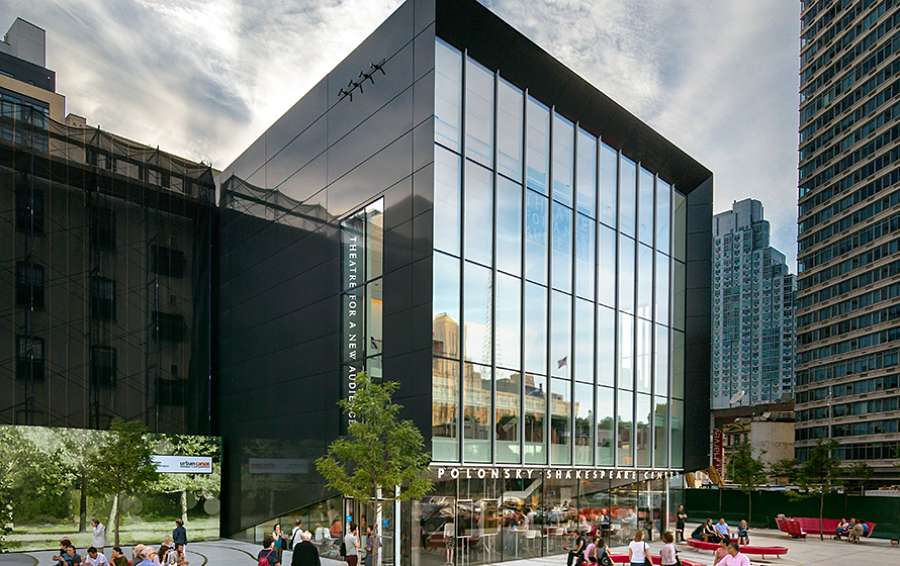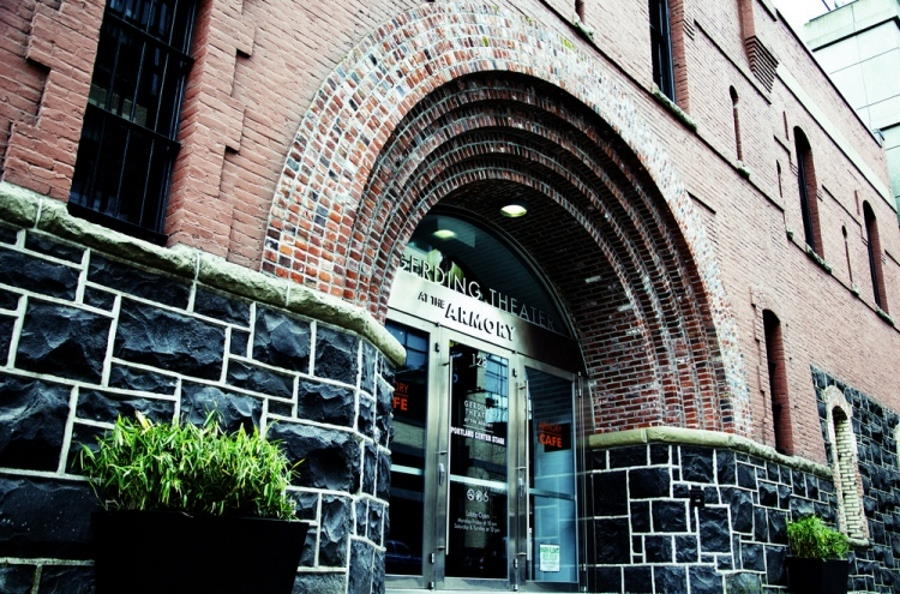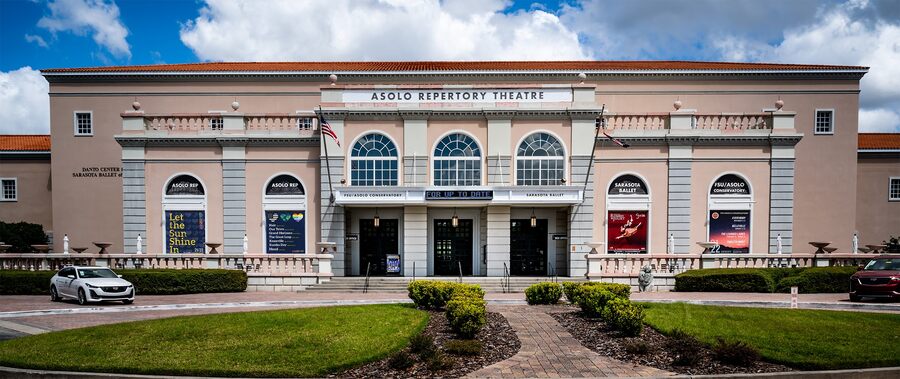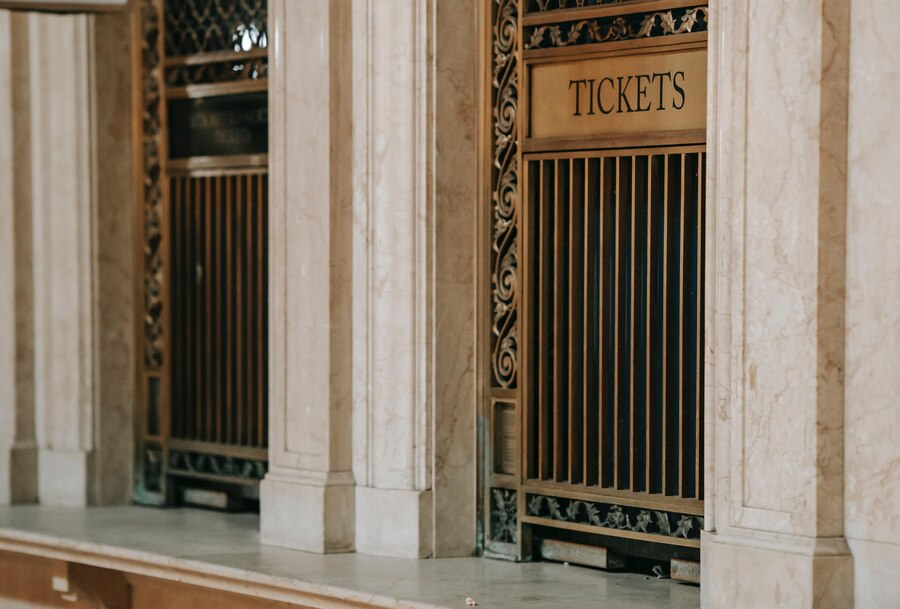The cost of milk is up. So is everything else, it seems. What about ticket prices at the theatre?
On Broadway, prices are high and the trend is ever upward. But what about at the nation’s nonprofits, where most Americans see theatre? Ticket prices have risen there too, but not at the rate the Consumer Price Index would anticipate. According to self-reported data from 63 AEA- and TCG-affiliated theatre companies obtained in a survey and in multiple interviews, with budgets ranging from less than $1 million to over $42 million, the average bottom ticket price for a non-discounted adult ticket in 2019 was $31.72; now it’s $34.75, about three bucks more. How about the average most expensive ticket sold? Four years ago it was $53.12; now, it’s $59.33, an increase of just over six dollars. Had they kept pace with inflation, prices would have risen $6 at the bottom and $10 at the top, according to the government’s Consumer Price Index Inflation calculator.
Nearly all artistic and managing directors polled saw their company’s price increases as marginal. But for many Americans, an increase of a few dollars per ticket can be significant, especially when piled on top of every other rising cost for goods and services. The New York Times raised an alarm about similar trends when it recently asked its readers if a $5 entrance fee increase for the city’s art museums meant that these museums were only “for the wealthy.”
While there has been much reporting (and hand-wringing) about the decline in subscriptions in recent years, there has been less data about the role prices have played in that trend. Perhaps surprisingly, data reveal that standard, non-flex subscriptions, where the audience member buys tickets in September for prescribed dates months in advance, never offered much savings for the subscriber: In 2019, these priced out to $30.40 per show at the bottom and $54 at the top. Today, they cost $34.80 to $60—a whopping savings of between 5 cents and $1.32 per ticket compared to single ticket prices, according to archived brochures, current website listings and survey and interview responses.
It is important to note that not all companies increased prices. While most did, the overall average is brought down by the sizable minority of companies that kept prices the same or even lowered them at the top (46 percent of companies) and bottom (43 percent of companies). Removing the price-lowering companies from the picture makes for a much higher average increase—around $9—at both top and bottom among companies that did raise their prices. Jeffrey Horowitz, founding artistic director at Brooklyn’s Theatre for a New Audience, one of the companies that kept prices steady, echoes the trepidation felt by some others about driving away audiences with too-high prices: It’s “pointless to raise prices if you have unsold inventory,” adding, “We all have large amounts of unsold inventory.”
As is widely documented, many theatre companies are currently struggling to bring back audiences and make ends meet, with some theatres closing or canceling whole seasons to shore up resources. To what extent are companies raising ticket prices to help keep doors open—or keeping them low to maintain and/or lure audiences?
At Florida Rep, which “took a direct hit from a Category 5 hurricane,” said producing artistic director Greg Longenhagen, the theatre “had to do some kind of bump on ticket sales with regard to inflation and all of our costs rising,” referencing both plywood and personnel. Indeed, 2020’s reckoning with the industry’s punishingly low wages, while widely recognized as a positive step by theatre leaders, has meant an increased financial burden on bottom lines that are often offset by audiences.
“Everyone needs to make a comfortable wage doing this,” argued Shane Peterman, producing artistic director of WaterTower Theatre in Addison, Texas. “If that means ticket prices need to rise…”

Many leaders also mentioned donor fatigue, both individual and institutional, as a major contributing factor to the current struggles of many theatre companies. Tony Braithwaite, artistic director of Act II Playhouse in Ambler, Pa., noted that “foundations have pivoted to other areas,” focusing on issues like food insecurity. Added Milwaukee Rep executive director Chad Bauman, “If private philanthropy and public support is waning, the only way you can balance the budget, if there is demand, is to raise ticket prices.”
Still, ticket price increases are usually a mere drop in the bucket toward closing that gap. At Theater J in Washington, D.C., where managing director David Lloyd Olson said that a drop in daily commuter traffic to the city has affected the theatre’s weekday attendance, Olson noted that the industry’s real problem “has to do with ticket prices not being high enough to be able to cover costs.”
Piling onto that economic reality is the difficulty that theatres have had in getting paying audiences to return at pre-pandemic levels. Survey respondents’ companies mirrored national trends that have shown up in other reports: 47 percent said their overall attendance was down between 10 percent and 30 percent, while an additional 27 percent reported seeing an even more drastic decrease.
Not all companies are doing poorly: The survey found that 13 percent of respondents said that their attendance numbers have stayed put, and another 13 percent said overall numbers have increased by 10 percent or more. Ticket prices didn’t seem to play a role in these differing fortunes—these companies increased prices at rates close to the industry average, and there was no demographic pattern evident in the data to account for their relative well-being.
Artistic leaders pointed to soft or unique factors as reasons for their success, including strokes of programming genius specific to their audience base. Arrow Rock Lyceum’s producing artistic director, Quin Gresham, believes that the theatre’s small-town Missouri “Wonderful Life vibes” played a part, while Bauman said that more of Milwaukee Rep’s audience got back into the theatregoing habit early in the pandemic because of Milwaukee’s “vigorous contact tracing,” which provided locals with convincing data about the safety of theatre spaces.
But the majority of companies find themselves with smaller audiences than in pre-pandemic times, and managing and artistic directors largely do not see this problem as connected to ticket prices. At Syracuse Stage, it’s a question of simple math. “Attendance was down before we increased our prices,” said managing director Jill Anderson. Added Erica Ezold, managing director of Malvern, Pa.’s People’s Light, “I don’t know that that’s the most interesting part of the story.”
Instead, the people I spoke to attribute the recent dip in theatregoing to factors like an aging population, an increasingly couch-centric culture, and the slow decline of the subscription model. Audience members today seem more interested in picking and choosing titles they know will interest them, leaders say, than in trusting a company to be an artistic home that will provide them with a rich and varied theatre diet. As a result, said Portland Center Stage managing director Liam Kaas-Lentz, “Programming challenges have really changed.” Since 2021, he said, PCS has produced several shows that “wildly exceeded goal and several shows that wildly missed their goal.” He added, “The misses are deeper.”

The story of ticket pricing as the major driver of audience attendance may be one with a longer arc. Even Broadway tickets, middle-class fare in mid-century, cost an average of $17.86 ($67 when adjusted for inflation) in 1980, the first year that the Broadway League started keeping track, and now cost an average of $128, to say nothing of the broader economic picture squeezing the shrinking American middle class from every angle. The 4-in-10 Americans who are too poor to float a $400 emergency weren’t exactly lining up around the block to see Mamma Mia pre-pandemic either, while the theatregoing audience, which has skewed financially comfortable for decades, can generally afford a modest price increase without feeling the pinch. As Theater J’s Olson explained, “For the majority of our audience, pricing is not a barrier to entry.”
But what about those for whom pricing is a barrier?
Discounted tickets, offered by most companies and almost always tied to age or occupation, have increased in price too, but at a slightly more modest rate than the cheapest regular adult tickets. Companies self-report that student or student rush tickets, offered by two-thirds of companies surveyed, cost about half of the bottom regular ticket price in both 2019 and 2023. Military tickets, offered by a third of companies surveyed, stood firm at about two thirds of the bottom regular ticket price. Senior tickets, also offered by a third of companies surveyed, represented more modest savings, but still knocked $2 off the bottom ticket price in 2019 and $4 today. Educator, industry, and group discounts all followed the same trend.
Many companies are making steps to increase access and attract new audiences outside of their financially comfortable pre-pandemic base. Out of the 63 companies surveyed, 20 said they added a discount program in the past four years (by far the most expanded of these are student and student rush), while eight of them jettisoned one or several of these programs. A small percentage offer general rush and discounts specifically for locals or disabled people.
But many would-be patrons fall outside of the narrow age ranges and professions which commonly receive discounts. As Lauren Halvorsen, writer of the influential theatre Substack Nothing For the Group, lamented, “Once I turned 30, it’s not like my income magically changed.” And many who qualify for discounts often don’t know that they exist. Halvorsen recalled students in the theatre class she taught at American University telling her they couldn’t afford to see plays, unaware of the many discounts offered by companies in D.C. Variations of pay-what-you-can nights exist at many companies, but these and other discounts are “always buried on a theatre’s website six pages deep,” she said. Added one survey respondent, “A patron looking for tickets in their budget has to become an expert in those pricing spectrums for particular theatres—which I think breeds selectivity and a bit of bargain-hunting burnout.”
Meredith Suttles, managing director of Marin Theatre Company, sees addressing these barriers as imperative to her company’s mission.
“Regional theatres were created to create broader access for communities outside of those big markets,” Suttles said. “If you come into those communities and create your own exclusivity around access because of cost barriers, then you’re perpetuating the same thing in your town.”
Some companies are finding innovative ways to expand access for those who don’t qualify for traditional discount programs. A small proportion of companies offer very deep, income-based discounts to every performance—i.e., flash your public benefits card and you’re in for $2 or $5. Addressing another non-ticketing expense faced by many theatregoers, Florida’s Asolo Rep offers a “PlayDate” program for parents to enjoy while bringing their young kids to the theatre for kid-appropriate theatre camp-style programming; WAM Theatre in Lenox, Mass., will even reimburse parents for childcare costs up to $75.

Artistic leaders I spoke to are generally satisfied with their discount programs, and in any case most don’t see ticket pricing as the main barrier to attendance for historically underrepresented groups of theatregoers. Many are focusing their efforts on culturally inclusive programming relevant to their local communities rather than simply lowering the cost of existing programs. When Asolo Rep produced a Man of La Mancha set in a modern-day immigrant deportation center, featuring a cast that included Mexican celebrities, 30 percent of ticketholders were people new to the theatre. Artistic director Peter Rothstein heard repeatedly from these new audiences that they previously hadn’t been sure “if we felt welcome in that space,” but that “ticket price was never the problem.”
Will these Man of La Mancha audiences, drawn in by a unique production, become repeat Asolo customers? Is it worth continuing to chase the dream of the subscription model, which promotes organizational programming priorities over individual events as a way to draw repeat audiences, in 2023? In interview responses, there seemed to be a tension between the belief that of course theatre organizations should strive to produce singular experiences that draw in crowds, while at the same time affirming that theatres should strive to feel like home to a broad base of theatregoers—subscribers, single-ticket holders, all of them.
Said Syracuse Stage’s Anderson, “While on an individual basis we know that folks’ discretionary income may be a challenge at this time, we know that, speaking broadly, folks are willing to spend their discretionary dollars on things they want to participate in.” Put simply, “It’s not about the price, it’s about the experience,” said Marin’s Suttles.
Seven interviewees mentioned this past summer’s blockbuster Taylor Swift and Beyoncé concerts (while PCS’s Kaas-Lentz noted that there’s some version of Taylor Swift in Six and Hamilton). Remarked the Wilma’s Leigh Goldenberg, “Those people are all paying more than a Wilma subscription to see a one-time event.” People’s Light’s Ezold agreed that “things are selling well if they’re events,” but also yearned for the opposite model, asking, “What can we do to have a fair number of people we consider stakeholders in the organization?” Ezold added that “studies that show if you go to a place three times a year,” it becomes woven into the fabric of your life.
While each nonprofit’s revenue mix looks different, only about 50 percent on average comes from ticket sales. Contributed revenue from individuals and foundations makes up most of the rest, with government funding bringing up the rear. Significant government support for theatre, enjoyed by other countries (and, for a time in 2020, our own), is widely viewed as the lifeline that would ensure the success of either model and enable companies to produce daring, important work, while providing tickets at an affordable price point for all. It’s a tough case to make in the current political environment, but the argument does have history on its side, according to Arizona Theatre Company artistic director Matt August.
“Theatre is for the community that it exists in,” said August. “It’s for and it’s about those communities. And if the government right now is not creating a support system for those conversations to actively happen, then it has to happen privately. And once a business becomes a private business, even though it’s a nonprofit business, it’s still mostly private money that’s coming in, then it becomes driven by capitalism. It becomes driven by money. Theatre, in its best form, has been supported by government funding. That’s where it’s been at its most robust. That’s when these conversations that happen in these plays become the most resonant and important.”
By and large, despite the challenges of the current moment, artistic leaders remain excited about theatre’s future and determined to persevere, government funding or no. Said Ross Egan, managing director of Asolo Rep, “There’s so much doom and gloom but it’s important for our audiences and our donors to share success stories. There are a ton of my colleagues that are optimistic and hopeful.”
The future of theatre may depend on whether audiences share that enthusiasm. As Milwaukee Rep’s Chad Bauman put it, “The question isn’t, have we priced ourselves out of range for a vast majority of people? The question is, are the vast majority of people finding enough benefit in what we are offering to pay the prices that we are charging?”
Rosie Brownlow-Calkin (she/her) is an Equity actor and assistant professor of theatre at the University of Nevada, Reno.





